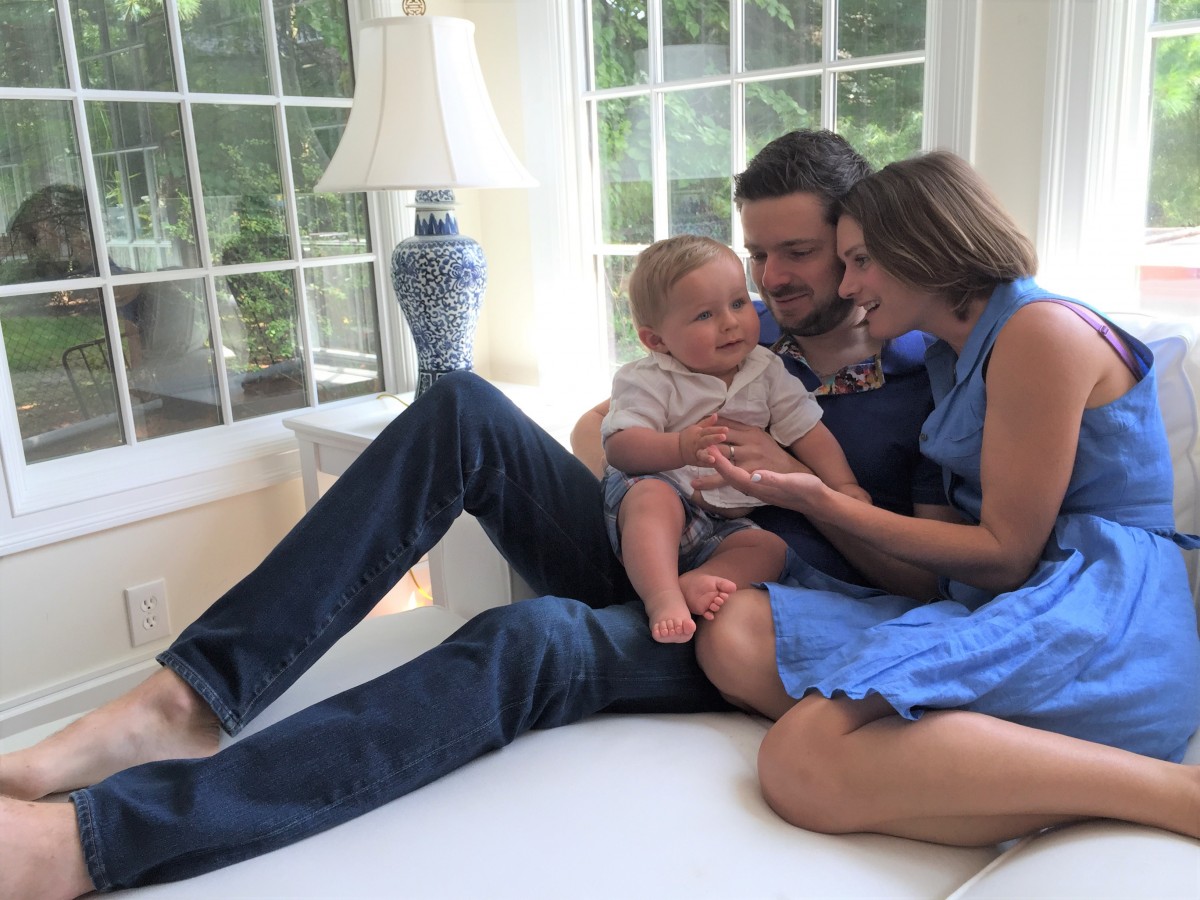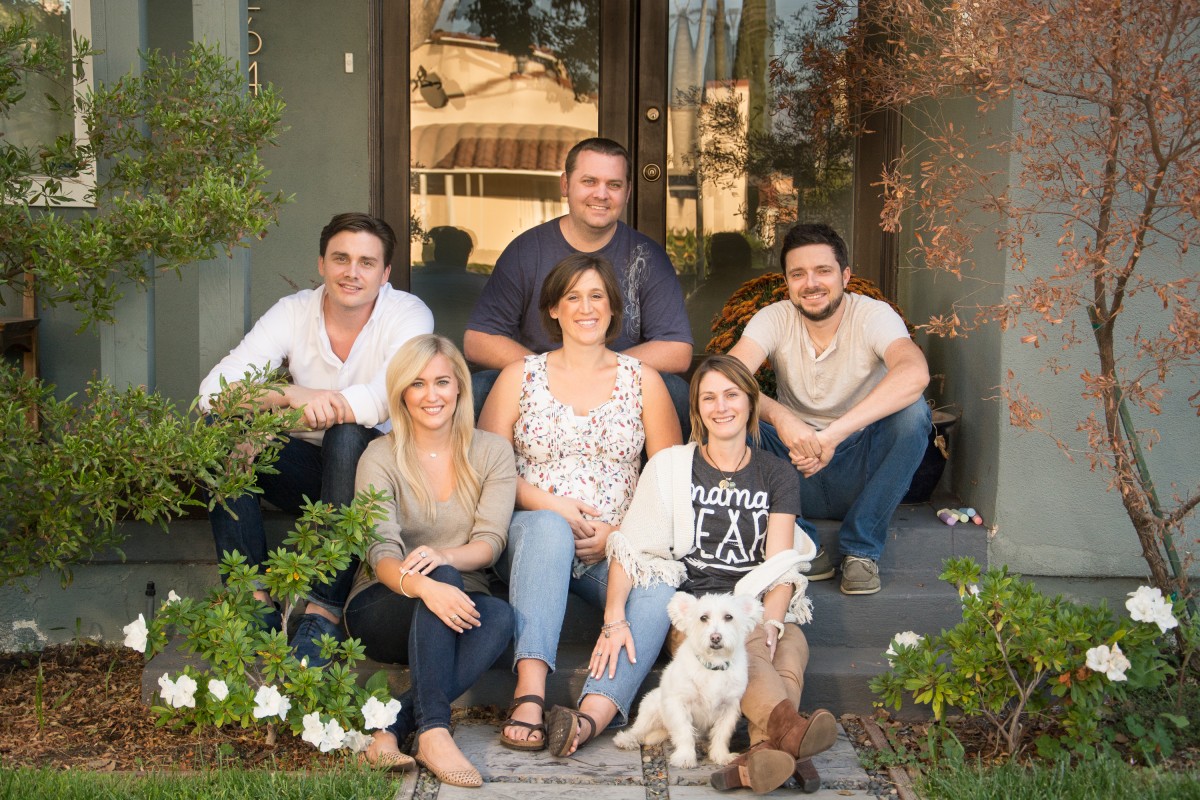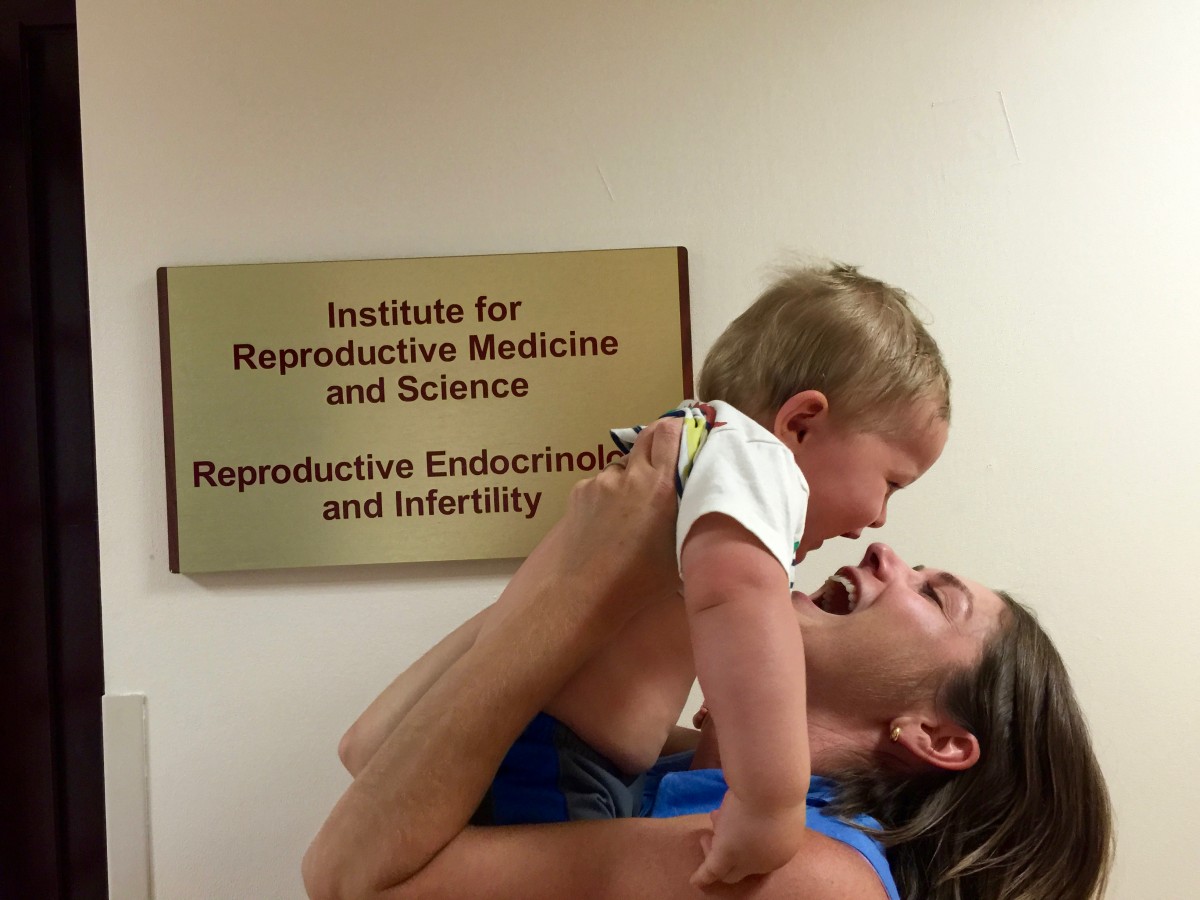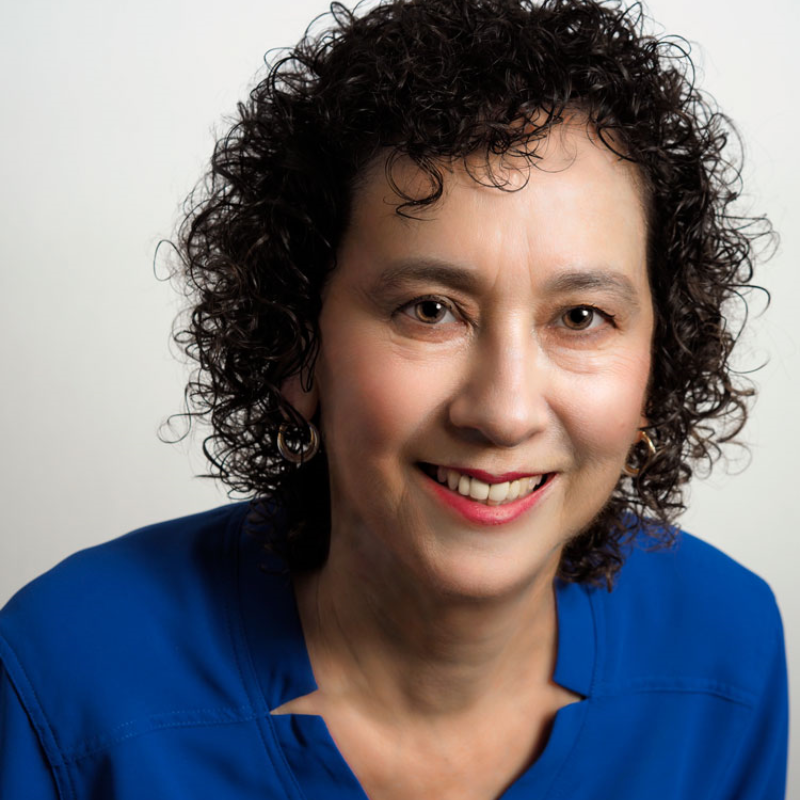Building a family after a metastatic diagnosis: Trish Russo
- 11/02/17
Trish Russo is a graduate of LBBC's Hear My Voice Metastatic Advocate program. She created a 90-minute documentary film, “Love Always, Mom,” about building a family after a metastatic breast cancer diagnosis.

Trish Russo’s doctors advised against harvesting her eggs for fertility preservation when she was diagnosed in 2011 with stage IIB breast cancer. They said the process would delay breast cancer treatment too much, so she was given medicine to protect her eggs.
Trish was 30 and working at a Los Angeles movie studio. She had chemotherapy, surgery and radiation. She and her doctors agreed she would take tamoxifen for 2 years, then stop it temporarily, since it can harm a fetus. Then she and her husband, Greg, would attempt a pregnancy. She would start tamoxifen again after delivery.
She never had a chance to try that plan. Just over a year after her initial diagnosis, Trish developed severe headaches and an MRI showed a large brain tumor. She had metastatic breast cancer.
The tumor was surgically removed. In 2014, after no evidence of disease (NED) for more than a year, Trish and Greg decided to try in vitro fertilization (IVF), in which sperm and egg are combined in a lab to create an embryo that is inserted in the uterus, using her eggs. To prepare, she went in early for her regular brain scan. It found a small tumor.
The tumor was treated but Trish’s doctors said she would have to be NED for more time before trying to become pregnant.
“That really rocked our world again,” she says. It caused her to decide IVF wouldn’t be possible for her. “I was really depressed,” she says. “It was extremely upsetting.”
But that wasn’t the end of Trish and Greg’s path to parenthood. Trish talked with LBBC contributing writer Robin Warshaw about where her family-planning journey went from there, and how it inspired its own film.

Trish and Greg, right, with their surrogate and her husband, center, and their egg donor and her partner, left. Photo credit: Mel Stone Photography
Robin: How did you develop a new plan for having a baby?
Trish: I went to see a therapist who specializes in young adults with cancer. She introduced me to a nurse navigator who said adoption could be an option one day, but is extremely difficult with a stage IV diagnosis. Then she told me about egg donation and surrogacy.
Robin: What did you, as a couple, have to consider about taking that route to parenthood?
Trish: We had to answer a lot of questions for ourselves that we may not have sat down and asked ourselves if we didn’t have cancer. I say “we” because it’s almost like the marriage has the cancer.
I said to Greg, “I really want a family and this is pretty much the only way we can build a family one day. But I want you to know what the odds are of how long I may be here. If we do this, you could end up being a single father. You need to be OK with that before we move forward.”
He said, “I don’t even want to think about you going anywhere, but I know it could happen and there’s nothing I’d rather do than have a child with you.”
Robin: How did you find an egg donor and a surrogate? What were those interactions like?
Trish: I’m in a breast cancer group, all ages and stages. At lunch with one of the women, who is a talent manager, I told her that the only way we could have a child was to have an egg donor and surrogate. She takes out her phone, calls somebody in her contact list, hands me the phone and says, “You have to talk to her. She’s a surrogacy agent.” I’m like, “Uh, OK!”
The surrogacy agency presented options to us. They had us fill out an extensive questionnaire so that it would be the right match for us and for the surrogate. We used a different agency for the egg donor. For egg donors you can kind of “play the field,” checking out agencies without committing until you find the donor you want. We sorted through hundreds of egg donor profiles online.
For both egg donor and surrogate we ended up loving our first candidate/match so we trusted our guts. Many egg donors are anonymous, but we only considered those who were open to meeting. We searched for an egg donor for several months and met her in May 2015, about a month after meeting our surrogate.
Our first egg transfer was in September 2015, but we had a miscarriage in October. Our surrogate became pregnant with our son in early 2016.
I wanted to have relationships with my egg donor and surrogate, but didn’t know if we would connect on that level. We became very close. That experience was actually better than I had anticipated or imagined. We created this whole other family outside of our own family, which was pretty cool.
Robin: Did those relationships last?
Trish: I’m going to be a bridesmaid in my egg donor’s wedding in December. After our son, Grayson, was born [in 2016], we met with [the donor's] mother and brother.
Our surrogate and her husband came down to celebrate my birthday. We text and correspond on Facebook. She has met the baby three times. And our egg donor babysat for him one night.
Both our donor and surrogate fully participated in the documentary, so you meet them in the film and get to know them, as we did. It gives a glimpse into their points of view, as to why they decided to help a family in this profound way.
Robin: You had a fertility clinic, egg donor, surrogate, legal fees and more. How expensive was the whole process?
Trish: All in, the cost was about $125,000 paid out over the course of 2 years. Some was put on credit cards, which we’ve since paid off. We were thankful to have savings and family helped us greatly. None of the funds raised for the documentary went towards building our family.
We did not qualify, but there are grants from Livestrong, The Samfund and BabyQuest that offer support for family building.
Our insurance paid for none of this. The surrogate’s insurance covered her prenatal appointments and we paid for her medical bills after the insurance limit.

Robin: Why did you decide to make a documentary about your experience?
Trish: I started filming our journey so that it could be a resource for others. I felt like this was something that had to be shared with people.
The first year, we filmed with no budget. I thought, “I don’t know when I’ll feel healthy or sick.” I sent a friend [in the documentary film business] a long email saying, “I have no resources. Would you like to do this with me?” He immediately said, “Yes.”
I filmed a lot when it was just me and my husband, but had a cameraman when we had doctors’ appointments. Because, mentally, how do I advocate for myself at the same time [as filming]?
Robin: Did you encounter any resistance to your parenthood plan?
Trish: I put a post on a stage IV Facebook group, telling people what I was going through and asking for their advice. Some were very supportive. But a lot of them said, “The worst part of having cancer and being a mom is knowing that I’m going to leave my child. It has tortured me every day, knowing how much I’m going to hurt them by dying.”
That was really hard to read and I kind of wish that I never put that post out there. But when other women write that post now, I throw myself in as a voice to them of what I wanted to hear: “It’s your decision. Once you have addressed all your questions, do what you feel is right.”
Robin: Given your diagnosis, did you ever wonder, “Is this the right thing for my child?”
Trish: Absolutely. I looked at it as he had a father who very much wanted him and was going to be a great father. I also have a large family who was very supportive of our decision. We never felt we were alone in the decision.
I obviously want to be there and see him grow up, but I understand that that may not be my choice. I know he’s in a good place and will have a great life regardless.
For more information about Trish’s documentary, “Love Always, Mom,” visit the Cyan Gray Hope Foundation.
This article was supported by the Grant or Cooperative Agreement Number 1 U58 DP005403, funded by the Centers for Disease Control and Prevention. Its contents are solely the responsibility of the authors and do not necessarily represent the official views of the Centers for Disease Control and Prevention or the Department of Health and Human Services.
Stay connected
Sign up to receive emotional support, medical insight, personal stories, and more, delivered to your inbox weekly.



